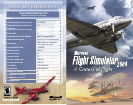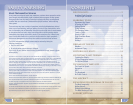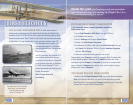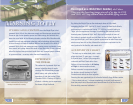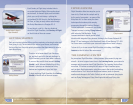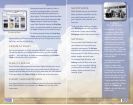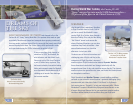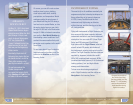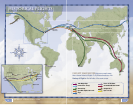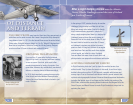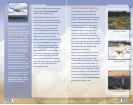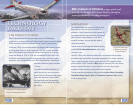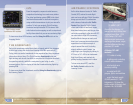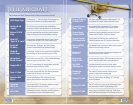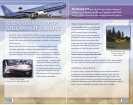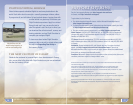
FLIGHT SIMULATOR 2004
22
A CENTURY OF FLIGHT
23
Dean Conger/CORBIS
GPS
From the magnetic compass to radio beacons,
navigational technology has made many strides.
The global positioning system (GPS) is the latest
landmark advancement in electronic navigation,
using satellite transmissions to plot your aircraft’s
position. To help you navigate, Flight Simulator
simulates two sophisticated GPS receivers. Both
units feature terrain mapping as well as airport and
facility information that you can access during ight.
To learn more about GPS features, read the
Using the GPS article in the
Learning Center.
The Kneeboard
Early pilots sometimes pasted their charts to boards, which they strapped
to their legs to keep the charts from blowing out of the open cockpit.
Today, pilots use similar kneeboards to stay organized and keep important
information close at hand. The Flight Simulator
Kneeboard holds your
ight brie ng and aircraft checklists, a complete list of keyboard shortcuts
for operating controls, and both a navigation log and a log of radio
communications. You can display or hide the Kneeboard during ights by
pressing F10.
To learn more about the Kneeboard, read the Using the Kneeboard article in
the Learning Center.
Air Traf c Control
As the skies became busier, Air Traf c
Control (ATC) evolved to make ight
safer and more ef cient. Flight Simulator
brings you into the ATC conversation
with enhanced interactive Air Traf c
Control. Real-time Air Traf c Control
clears you to take off and land, issues
directional instructions, and lets you hear
controllers speaking to other aircraft. ATC
can also issue in- ight IFR clearances,
handle altitude changes en route, and
direct you to nonprecision and precision
approaches to multiple runways at
airports around the world, including
airports without control towers. You
might begin your ying day by talking to
ATC from a 747–400 on an instrument
ight from Rome, and conclude by
getting landing clearance into London.
To learn more about ATC, read the
Air Traf c Control articles in the
Learning Center.
Flight Simulator models
sophisticated GPS receivers.
The First
‘Jumbo Jet’
Since the rst Boeing 747
(above) was built, Boeing has
delivered more than 1,230
747s. Today’s 747–400
features digital systems as
well as greater power, range,
and fuel ef ciency than any
previous 747 model.
A Boeing 747–400
includes …
… 171 miles of wiring.
… 6 million parts, including
some 3 million fasteners.
… a tail as high as a
six-story building.
… a cockpit with 365
gauges, lights, and switches.
… wings that each weigh
28,000 pounds (12,700
kilograms)—10 times the
entire weight of Boeing’s rst
airplane, the 1916 B&W.



